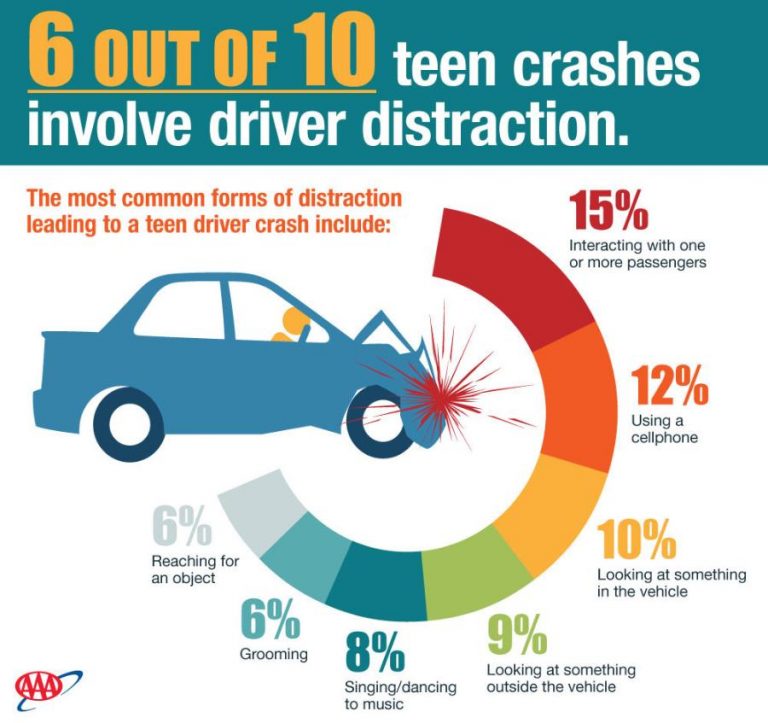
We teach in defensive driving classes that crashes caused by distracted teen drivers may be a much more serious problem than previously thought, possibly even four times greater than earlier estimates. Distraction was a factor in nearly 6 out of 10 moderate-to-severe teen crashes in an analysis of nearly 1,700 videos.
In defensive driving class we share the major findings of a report published by AAA Foundation for Traffic Safety, a nonprofit research and education organization. The group called the study an “unprecedented look” into the causes of teen crashes and “the most comprehensive research ever conducted into crash videos of teen drivers,” a group that has the highest crash rate in the United States.
For the in defensive driving study, researchers analyzed the six seconds leading up to a crash in 1,691 videos of teen drivers taken from in-vehicle event recorders. The results showed that distraction was a factor in 58 percent of all crashes studied. Previous estimates by the National Highway Traffic Safety Administration (NHTSA) indicated that distraction is a factor in only 14 percent of all teen driver crashes, the group said.
“Access to crash videos has allowed us to better understand the moments leading up to a vehicle impact in a way that was previously impossible,” Peter Kissinger, president and chief executive of the foundation, said in a statement. “The in-depth analysis provides indisputable evidence that teen drivers are distracted in a much greater percentage of crashes than we previously realized.”
The study, “Using Naturalistic Driving Data to Assess the Prevalence of Environmental Factors and Driver Behaviors in Teen Driver Crashes,” was conducted in partnership with researchers at the University of Iowa. The report found that the most common forms of distraction leading up to a crash by a teen driver included:
• Interacting with one or more passengers: 15 percent of crashes
• Cell phone use: 12 percent of crashes
• Looking at something in the vehicle: 10 percent of crashes
• Looking at something outside the vehicle: 9 percent of crashes
• Singing/moving to music: 8 percent of crashes
• Grooming: 6 percent of crashes
• Reaching for an object: 6 percent of crashes
In analyzing the defensive driving videos, researchers found that teen drivers who manipulated their cell phone had their eyes off the road for an average of 4.1 out of the final six seconds leading up to a crash, and in rear-end crashes failed to react more than half of the time before impact, meaning they crashed without braking or steering.
Based on the report’s findings, the AAA recommends that states prohibit all cell phone use by teen drivers and restrict passengers to one non-family member for the first six months of driving. Currently, 33 states have graduated driver licensing (GDL) laws that prevent cell phone use for teens and 18 states have passenger restrictions meeting AAA’s recommendations, the group noted. GDL laws provide teen drivers the opportunity to gain practical experience by gradually granting privileges during higher-risk situations, like driving at night or with peer passengers.
The defensive driving report also stressed the critical role that parents play in preventing distracted driving during and after the learning-to-drive process. AAA resources for parents and teens include information on how to create a parent-teen driving agreement and the . If you do get a ticket take our Arizona Defensive Driving Class
